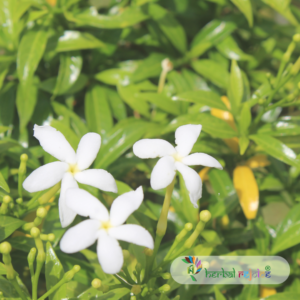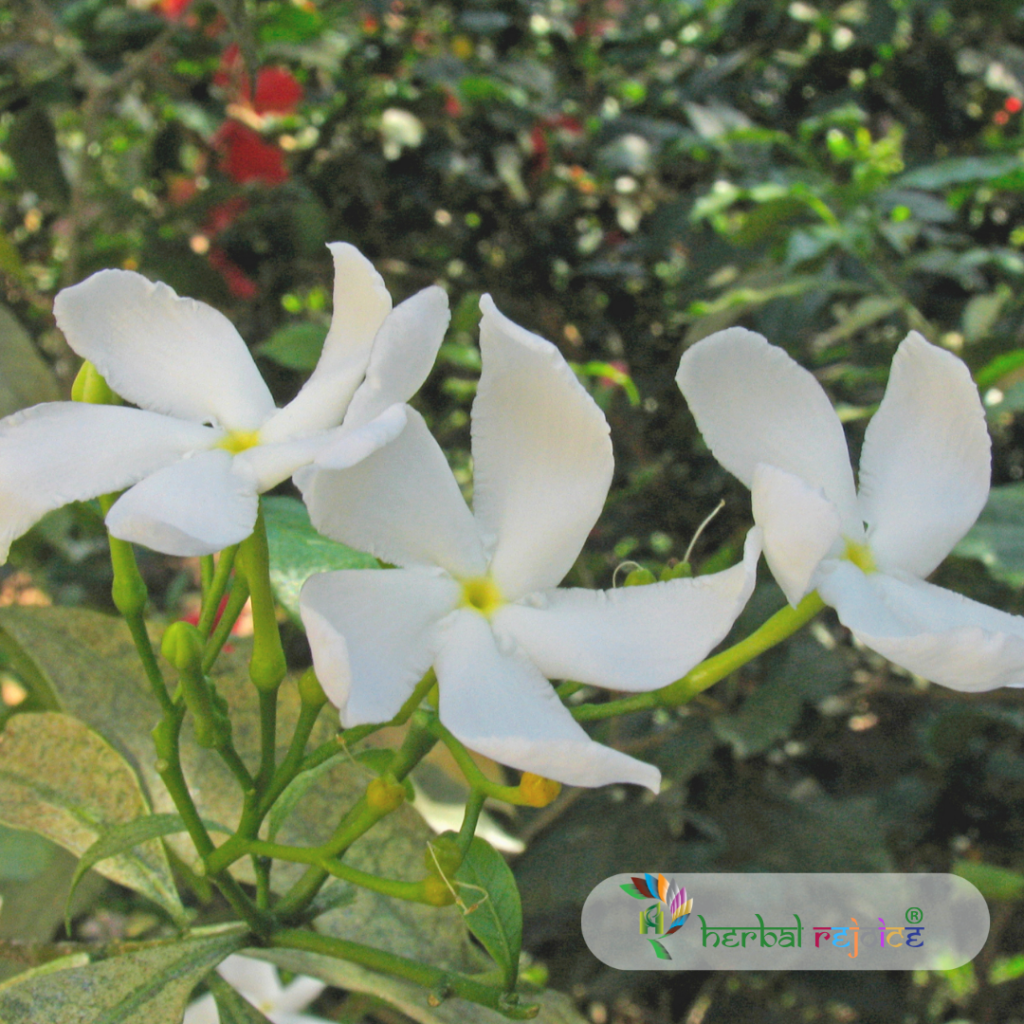Introduction
Tabernaemontana coronaria (Jacq.) Willd., also known as East Indian Rosebay, is a plant in the Apocynaceae family. It is native to the Sub-Himalayan tract and is commonly cultivated in gardens. The plant has various medicinal uses in traditional systems of medicine, including Ayurveda and Siddha.
In Ayurveda, the plant is referred to as Tagar or Nandivriksha, while in Siddha/Tamil medicine, it is known as Nandiyavattam. Folk names for the plant include Tengari and Chaandani.
Medicinal Uses
The leaves of Tabernaemontana coronaria have a milky juice with anti-inflammatory properties, which can be applied topically to wounds. The flowers of the plant, when mixed with oil, are used to treat skin diseases. The root of the plant has acrid and anodyne properties, relieving toothache and also acting as a vermicide.
Chemical Constituents
The indigenous system of medicine uses different parts of Tabernaemontana coronaria for the treatment of skin diseases and cancer. A decoction of the leaves is used as an antihypertensive and diuretic. The plant from Sri Lanka, including the roots, leaves, and flowers, contains several indole alkaloids such as voacristine, voacangine, coronaridine, vobasine, tabernaemontanine, and dregamine. Isovoacristic hydrochloride, found in the plant, has been found to cause bradycardia in frogs and rabbits.

The flowers contain an alkaloid called tabersonine, which has a hypotensive effect on anaesthetized cats. Coronaridine, another alkaloid found in the plant, has shown autonomic as well as central nervous system activity in animal studies. It has demonstrated analgesic effects and has been effective in suppressing foot-shock-induced rage in mice. Another indole alkaloid found in the plant, referred to as (I), has shown a 48.8% inhibition of HC1-induced ulcer in mice. Additionally, the crude alkaloid extracts of the leaves, bark, and flowers have exhibited antibacterial activity against Staphylococcus aureus.
Conclusion
In conclusion, Tabernaemontana coronaria (East Indian Rosebay) has various medicinal properties and has been traditionally used to treat skin diseases, hypertension, and other conditions. The plant contains several indole alkaloids that have demonstrated biological activity, including analgesic and antibacterial effects. Further research is needed to fully understand the therapeutic potential of this plant.
Frequently Asked Questions
What is Tabernaemontana coronaria?
Tabernaemontana coronaria is a plant in the Apocynaceae family, commonly known as East Indian Rosebay.
Where is Tabernaemontana coronaria native to?
Tabernaemontana coronaria is native to the Sub-Himalayan tract.
Is Tabernaemontana coronaria commonly cultivated in gardens?
Yes, Tabernaemontana coronaria is commonly cultivated in gardens.
What are the medicinal uses of Tabernaemontana coronaria in traditional systems of medicine?
Tabernaemontana coronaria has various medicinal uses in traditional systems of medicine, including Ayurveda and Siddha.
What are the Ayurvedic names for Tabernaemontana coronaria?
In Ayurveda, Tabernaemontana coronaria is referred to as Tagar or Nandivriksha.
What are the Siddha/Tamil medicine names for Tabernaemontana coronaria?
In Siddha/Tamil medicine, Tabernaemontana coronaria is known as Nandiyavattam.
What are some folk names for Tabernaemontana coronaria?
Folk names for Tabernaemontana coronaria include Tengari and Chaandani.
What are the medicinal properties of the leaves of Tabernaemontana coronaria?
The leaves of Tabernaemontana coronaria have a milky juice with anti-inflammatory properties, which can be applied topically to wounds.
How are the flowers of Tabernaemontana coronaria used medicinally?
The flowers of Tabernaemontana coronaria, when mixed with oil, are used to treat skin diseases.
What are the medicinal properties of the root of Tabernaemontana coronaria?
The root of Tabernaemontana coronaria has acrid and anodyne properties, relieving toothache and acting as a vermicide.
How is Tabernaemontana coronaria used in the treatment of skin diseases?
Different parts of Tabernaemontana coronaria are used in the treatment of skin diseases in traditional systems of medicine.
What are the medicinal uses of a decoction of the leaves of Tabernaemontana coronaria?
A decoction of the leaves of Tabernaemontana coronaria is used as an antihypertensive and diuretic.
What are some of the indole alkaloids found in Tabernaemontana coronaria?
Tabernaemontana coronaria contains several indole alkaloids such as voacristine, voacangine, coronaridine, vobasine, tabernaemontanine, and dregamine.
What effects does Isovoacristic hydrochloride have on animals?
Isovoacristic hydrochloride, found in Tabernaemontana coronaria, has been found to cause bradycardia in frogs and rabbits.
What is the effect of tabersonine, an alkaloid found in the flowers of Tabernaemontana coronaria?
Tabersonine, an alkaloid found in the flowers of Tabernaemontana coronaria, has a hypotensive effect on anaesthetized cats.
What effects does coronaridine, an alkaloid found in Tabernaemontana coronaria, have?
Coronaridine, another alkaloid found in Tabernaemontana coronaria, has shown autonomic as well as central nervous system activity in animal studies. It has demonstrated analgesic effects and has been effective in suppressing foot-shock-induced rage in mice.
What are some of the potential therapeutic benefits of Tabernaemontana coronaria?
Tabernaemontana coronaria has demonstrated potential therapeutic benefits in skin diseases, hypertension, and other conditions.
What is the inhibitory effect of an indole alkaloid (I) found in Tabernaemontana coronaria?
An indole alkaloid (I) found in Tabernaemontana coronaria has shown a 48.8% inhibition of HC1-induced ulcer in mice.
Does Tabernaemontana coronaria have antibacterial activity?
Yes, the crude alkaloid extracts of the leaves, bark, and flowers of Tabernaemontana coronaria have exhibited antibacterial activity.


